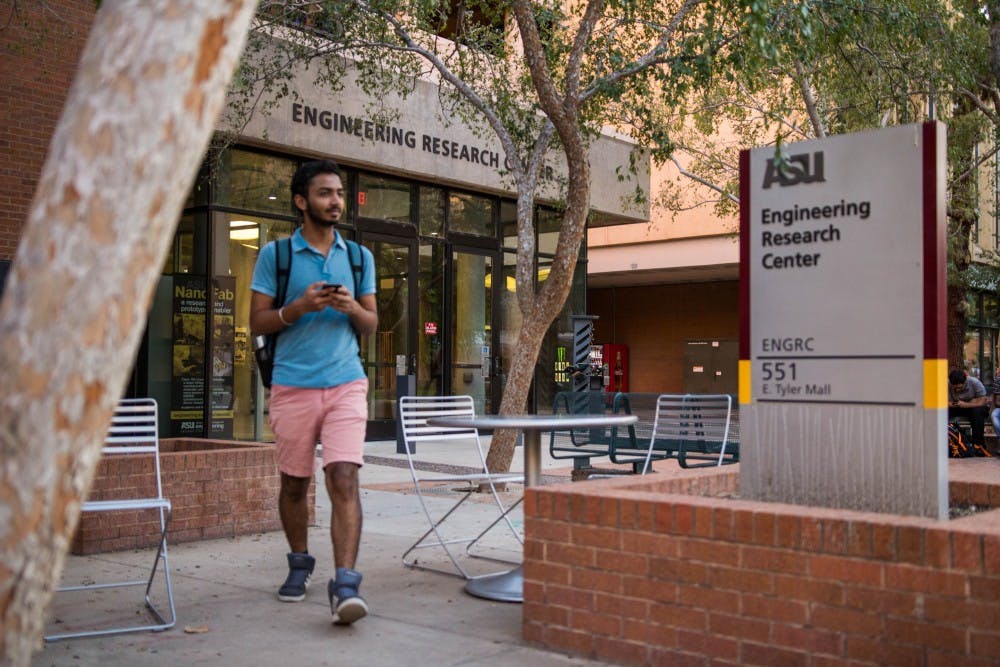ASU’s research expenditures have exceeded $604 million in fiscal year 2018, the most recent figure in what's been steady growth for research spending at ASU.
This comes from a memorandum written by Sethuraman Panchanathan, the executive vice president of the ASU Knowledge Enterprise Development.
Consistently, the University has exceeded its goals for research expenditures each year, leading to a steady rate of growth and the promise of more opportunity for visible community impacts, though not every research venture attracts the same level of interests from big spenders.
The money ASU receives from external sources allows larger-scale research projects to take place on campus, providing more opportunities for students and faculty to make progress towards finding solutions to global challenges.
The University ranks seventh in research spending nationwide among institutions without medical schools. For reference, the Massachusetts Institute of Technology ranks first.
Panchanathan said the fast-growing research environment at the University is due largely to the types of faculty ASU employs.
“The number only indicates that we are growing rapidly,” Panchanathan said. “But at the end of the day, what is this all about? In order to get a fantastic research environment growing at this pace, it all begins with fantastic faculty who'll come up with outstanding ideas, and those ideas then get parlayed in venues which are very competitive.”
Since 2010, the University’s annual research expenditures have been growing at an fairly constant average rate of $33 million per year.
If this trend continues, the expenditures in 2025 should be around $812 million, which is slightly less than the goal for that year set by Panchanathan in the memorandum, yet he said he was confident that the goal of $815 million by 2025 was attainable.
He said that the University employs a multi-pronged strategy in which they examine the different levels of ongoing projects and bring in talent from outside the University to help researchers already at ASU.
According to Panchanathan, as more research questions are answered, more questions arise, leading to yet more funding and greater community impacts.
Flavio Marsiglia, the founding director of the ASU Southwest Interdisciplinary Research Center, said his research in youth substance abuse prevention strategies would not be possible without continuous external funding.
“One of the interventions that is very popular in the U.S. is called keepin' it REAL,” Marsiglia said. “Then our colleagues in Mexico wanted to use it … Although we share much with Mexico, it's a different country. The National Institute of Drug Abuse, which is also part of the (National Institutes of Health), gave us a very large grant to do the cultural adaptation for Mexico and also to test it in Mexico with children in Mexico.”
Part of what sustains the growth of research funding for ASU is knowing the types of community problems for which foundations and organizations are seeking solutions.
“You look at what they're passionate about — what do they want to really get solved?” Panchanathan said. "How do you configure yourself to solving problems that foundations will get excited by? That's what causes them to continue to reinvest, expand the investments, and therefore we are doing really well.”
However, not every area of research is funded quite the same. While space exploration projects such as the Psyche Mission have brought $450 million to ASU, other fields sometimes experience a lack of funding.
While ASU does not have a medical school, they partner with healthcare institutions around the Valley, such as Mayo Clinic, to seek innovative solutions in all areas. The same is true for other fields such as agriculture.
Roberto Gaxiola, a professor for the School of Life Sciences who studies plant genetics and food insecurity, said even though his lab does not receive a lot of external funding, they still have the potential to produce change by partnering with other institutions and growing their connections in that sense.
“The growth is sustained by big grants that come ... to people doing more human-related things,” Gaxiola said. “I mean like cancer or neural diseases. With plants here in the U.S., you don't really get the big money unless you have something that's already a smoking gun. We have enough money to keep the research going. And of course, we have people in my group who have a possibility of really making a big impact in the world.”
Nonetheless, the growth promised by the University points to greater opportunity, and yes — innovation, for the students of ASU.
“Many, many students find problems for which we have not got solutions,” Panchanathan said. “They try to concoct a solution. They may need the help of other people to help in ... designing and building the solution, but students are amazing in terms of locating the problem and also committing to solving the problem.”
Reach the reporter at kalbal@asu.edu or follow @KarishmaAlbal on Twitter.
Like The State Press on Facebook and follow @statepress on Twitter.




